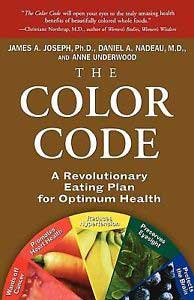Nutrition for Chronic Fatigue: Antioxidants = Pro-Vitality

I recently presented in my “Medical Library” series The Color Code by James Joseph, Daniel Nadeau, and Anne Underwood. The premise of the book is that eating from a plate filled with colorful fruits and vegetables is the way to optimum health. It sounds like advice your grandma would give you, and you wouldn’t need medical professionals to go around acting like they discovered the cure for cancer.
However, the secret toThe Color Code is that inside the array of colors of these foods is the secret to enhanced immunity. I’m an immunologist specialist, and the teaching I pass along to my medical students (and patients) is that phytonutrients supply chemicals called antioxidants that protect cells from damage from what we ingest and breathe in.
How Antioxidants Work
To understand how antioxidants work is basic chemistry, but I prefer to use the example with the real thing: take an apple and slice it in half. On one side squeeze some fresh lemon and leave the other side untouched. Leave the split apple alone for a few hours.
You will observe (I’ve now made you a scientist!) that the apple without lemon juice squeezed on it has turned brown and started to rot. The apple half with the lemon juice stayed fresh. Why?
The lemon juice contained antioxidants that preserved the freshness of the apple. In the same way, when we ingest foods with anti-oxidants or take vitamins containing antioxidants, our cells are more protected from injury and destruction.
A Scoring System for Antioxidant Strength
Researchers at Tufts University came up with a scoring system to assess the antioxidant strength of different foods. They used the term ORAC units, short for oxygen radical absorbance capacity, to rank which foods were the most potent antioxidants.
Popular magazines and health experts preferred calling these “anti-aging” points. I don’t like the term “anti-aging” since no one really gets younger from eating foods or exercising, but what you do develop is increased vitality. We could always use some of that.
Let’s review some popular foods associated with regions of the body that their antioxidant power works:
- Blueberries: the brain fruit, loaded with anthocyanins, beta-carotene, vitamin C.
ORAC score 2,400. - Spinach: the eye saver, loaded with chlorophyll, lutein and beta-carotene.
ORAC score 1,260. - Tomatoes: prostate cancer-killer, loaded with lycopene along with beta and zeta-carotene.
ORAC score 189.
How Does This All Fit It With Patients Suffering From Chronic Fatigue?
Dr. Jacob Teitelbaum, an expert in Chronic fatigue has made the strong case that treating a person’s mitochondria is the key to regaining energy. The mitochondria are considered the cell’s power station where key enzymatic reactions occur. If your body ingests high amounts of these phytonutrients it is able to provide more energy to your body.
At Mitchell Medical Group, we frequently help boost our patients antioxidants levels with injections containing glutathione and IV’s with Vitamin C to jump-start the fatigue patient.
The use of antioxidants is a way to cleanse your body of free radicals which damage cells.
Antioxidants Are to Your Cells What the Lemon Juice Is to the Cut Apple- Keeping the Freshness In!
– Dr. Dean Mitchell
Mitchell Medical Group, NYC
